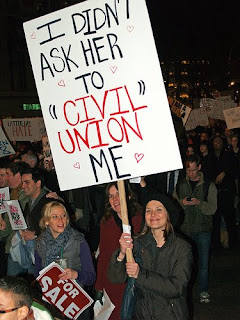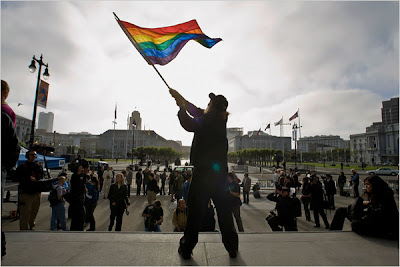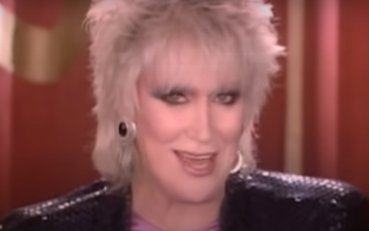
Above and below: The 35th annual In the Heart of the Beast Puppet and Mask Theatre MayDay Parade - Minneapolis, May 3, 2009.
For more images and explanation of the theme of this year’s parade, click here and here.


Above: Minnesotans for Personal Responsibility!
On May 5, 2009, I videoed a number of my friends as they performed some lively street theater on the steps of the Minnesota State Capitol. They hosted a ceremony that “honored” Minnesota Governor Tim Pawlenty for his defense of corporate profits and his cutbacks of public services and education.

Above: The welcome return of spring to Minnesota!
For more images, click here.

Above: My friend Jean Greenwood with “author in spirituality” J. Philip Newell - Pilgrim Lutheran Church, May 20, 2009.
An internationally renowned scholar, teacher, and author (Listening for the Heartbeat of God and Christ of the Celts), Newell visited the Twin Cities in May 2009 for a number of events focused on exploring and celebrating Celtic spirituality.
According to the organizers of the event at Pilgrim Lutheran Church:
Celtic Christianity refers to a spirituality that characterized the young British church from as early as the fourth century A.D. Although it was pushed out to the Celtic fringes of Britain after Augustine of Canterbury’s Roman mission in 597, it has always managed to survive in one form or another, usually on the edges of formal religion.
. . . The Celtic style of prayer is known for engaging imagination through visual and spatial imagery, as well as emphasizing the life of God within creation. These prayers address more than the transcendent and ultimate questions that most religions define, but also the mysteries and challenges of everyday life.

Above: Sitting with my friends (from right) Robert, John, and Brian at the Guthrie Theater - Thursday, May 21, 2009.
We were at the Guthrie to see Tony Kushner’s latest play, The Intelligent Homosexual’s Guide to Socialism and Capitalism with a Key to the Scriptures. Although the play had some good moments, overall it came across as still very much a “workshop” production. The fact that national critics have been asked not to review the play while it’s at the Guthrie kind of says it all. Still, we had a fun night out seeing Kushner’s well-acted and produced play. It was just a pity that - at this stage, at least - it’s a play that’s more polemic than art.

Above: The view of the Mississippi River and the historic Stone Arch Bridge from the balcony of the Guthrie Theater - May 21, 2009.

Above and below: A party for my friend LeMonte, who is relocating to California for an extended visit with his family.

From left: John, LeMonte, and Patsy.

Above: The “shady oasis” that is my front garden (albeit not looking particularly shady in this photo!).
For more images, click here.

Above and below: Pentecost Sunday at the Cathedral of St. Paul - May 31, 2009.
As is now the custom in the Archdiocese of St. Paul-Minneapolis, a number of Catholics attended the noon Pentecost Sunday Mass wearing the Rainbow Sash - a symbol that proclaims that its wearer is (or knows and affirms someone who is) a gay, lesbian, bisexual, or transgender (GLBT) person who embraces and celebrates their sexual orientation and identity as a sacred gift. Since 2005, the Archdiocese has adopted the policy of denying Communion to wearers of the Rainbow Sash.
 For reasons that I’ll explain in a future post, I and six others did not attend Mass inside the Cathedral this Pentecost Sunday. Instead, in an effort to “be the change in the Church we wish to see” (and which many of us are working to see realized), we held our own Eucharistic celebration on the sidewalk outside.
For reasons that I’ll explain in a future post, I and six others did not attend Mass inside the Cathedral this Pentecost Sunday. Instead, in an effort to “be the change in the Church we wish to see” (and which many of us are working to see realized), we held our own Eucharistic celebration on the sidewalk outside.One of the readings we shared during our “sidewalk Eucharist” was from Catholic theologian Monika Hellwig.
Eucharist is first and foremost the celebration of the divine hospitality made present in the person of Jesus. . . . At its simplest level of sharing food, the Eucharist signals that in God’s world there is room for all.



































































